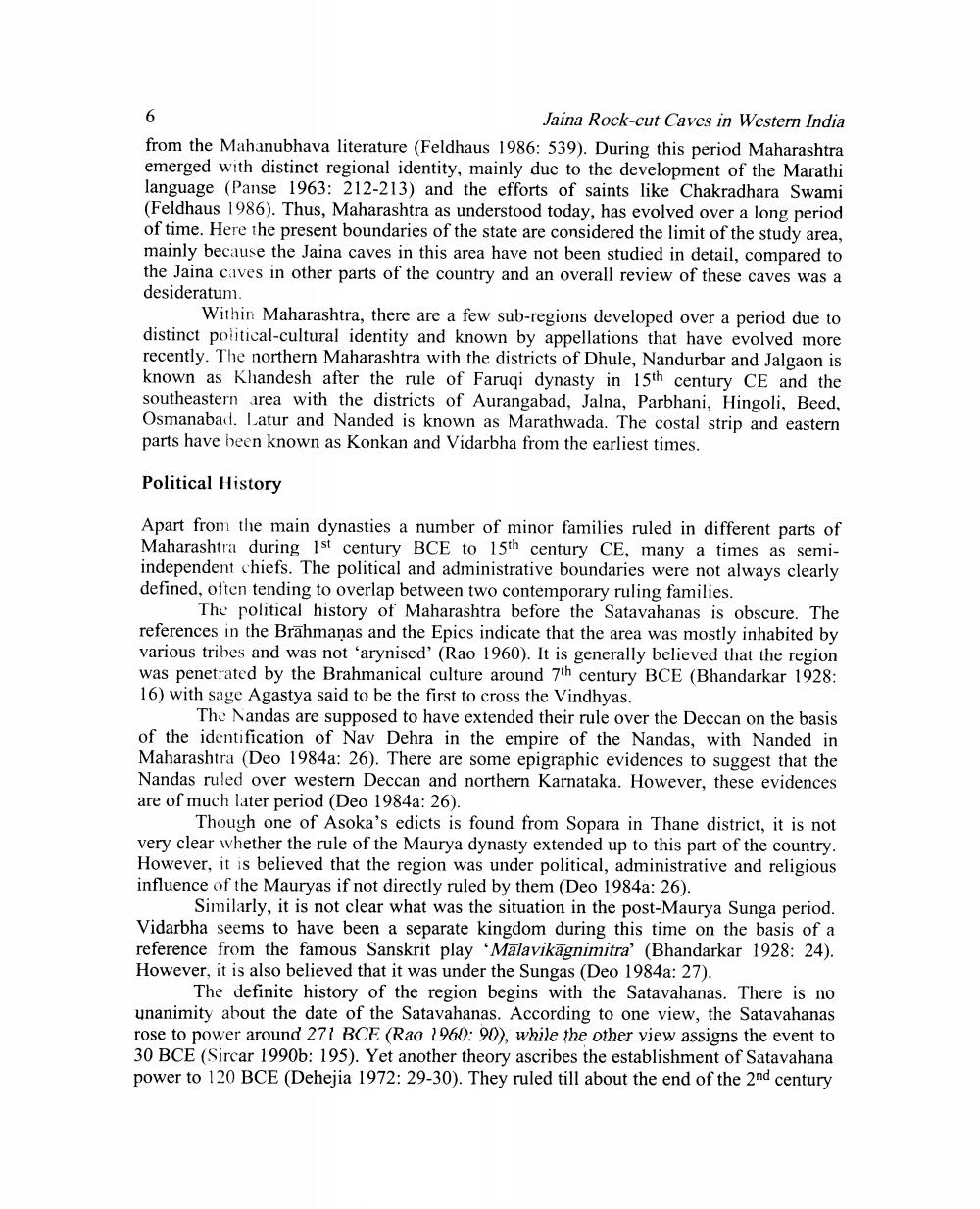________________
Jaina Rock-cut Caves in Western India from the Mahanubhava literature (Feldhaus 1986: 539). During this period Maharashtra emerged with distinct regional identity, mainly due to the development of the Marathi language (Panse 1963: 212-213) and the efforts of saints like Chakradhara Swami (Feldhaus 1986). Thus, Maharashtra as understood today, has evolved over a long period of time. Here the present boundaries of the state are considered the limit of the study area, mainly because the Jaina caves in this area have not been studied in detail, compared to the Jaina caves in other parts of the country and an overall review of these caves was a desideratum.
Within Maharashtra, there are a few sub-regions developed over a period due to distinct political-cultural identity and known by appellations that have evolved more recently. The northern Maharashtra with the districts of Dhule, Nandurbar and Jalgaon is known as Khandesh after the rule of Faruqi dynasty in 15th century CE and the southeastern area with the districts of Aurangabad, Jalna, Parbhani, Hingoli, Beed, Osmanabad. Latur and Nanded is known as Marathwada. The costal strip and eastern parts have been known as Konkan and Vidarbha from the earliest times.
Political History
Apart from the main dynasties a number of minor families ruled in different parts of Maharashtra during 1st century BCE to 15th century CE, many a times as semiindependent chiefs. The political and administrative boundaries were not always clearly defined, often tending to overlap between two contemporary ruling families.
The political history of Maharashtra before the Satavahanas is obscure. The references in the Brahmanas and the Epics indicate that the area was mostly inhabited by various tribes and was not 'arynised' (Rao 1960). It is generally believed that the region was penetrated by the Brahmanical culture around 7th century BCE (Bhandarkar 1928: 16) with sage Agastya said to be the first to cross the Vindhyas.
The Nandas are supposed to have extended their rule over the Deccan on the basis of the identification of Nav Dehra in the empire of the Nandas, with Nanded in Maharashtra (Deo 1984a: 26). There are some epigraphic evidences to suggest that the Nandas ruled over western Deccan and northern Karnataka. However, these evidences are of much later period (Deo 1984a: 26).
Though one of Asoka's edicts is found from Sopara in Thane district, it is not very clear whether the rule of the Maurya dynasty extended up to this part of the country. However, it is believed that the region was under political, administrative and religious influence of the Mauryas if not directly ruled by them (Deo 1984a: 26).
Similarly, it is not clear what was the situation in the post-Maurya Sunga period. Vidarbha seems to have been a separate kingdom during this time on the basis of a reference from the famous Sanskrit play Malavikāgnimitra' (Bhandarkar 1928: 24). However, it is also believed that it was under the Sungas (Deo 1984a: 27).
The definite history of the region begins with the Satavahanas. There is no unanimity about the date of the Satavahanas. According to one view, the Satavahanas rose to power around 271 BCE (Rao 1960: 90), while the other view assigns the event to 30 BCE (Sircar 1990b: 195). Yet another theory ascribes the establishment of Satavahana power to 120 BCE (Dehejia 1972: 29-30). They ruled till about the end of the 2nd century
The




